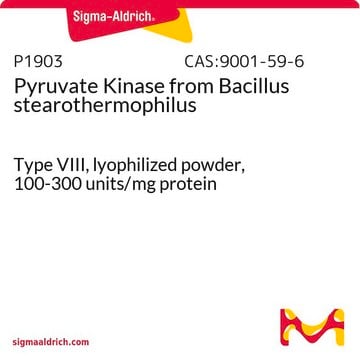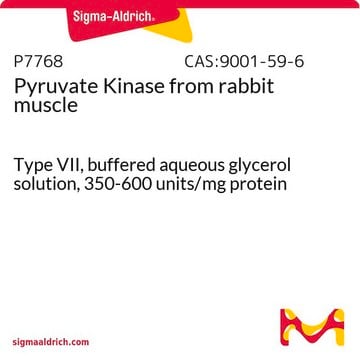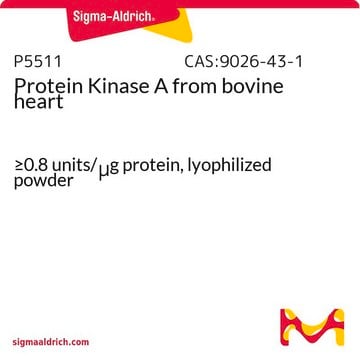P2014
Phosphorylase Kinase from rabbit muscle
lyophilized powder, ≥60 units/mg protein
Sinónimos:
ATP:phosphorylase-b phosphotransferase, Dephosphophosphorylase kinase
About This Item
Productos recomendados
Formulario
lyophilized powder
actividad específica
≥60 units/mg protein
composición
Protein, 20-40% biuret
actividad extraña
ATPase ≤0.5%
phosphorylase a ≤1%
phosphorylase b ≤5%
temp. de almacenamiento
−20°C
Descripción general
Aplicación
Definición de unidad
Forma física
Código de clase de almacenamiento
11 - Combustible Solids
Clase de riesgo para el agua (WGK)
WGK 3
Punto de inflamabilidad (°F)
Not applicable
Punto de inflamabilidad (°C)
Not applicable
Equipo de protección personal
Eyeshields, Gloves, type N95 (US)
Elija entre una de las versiones más recientes:
Certificados de análisis (COA)
¿No ve la versión correcta?
Si necesita una versión concreta, puede buscar un certificado específico por el número de lote.
¿Ya tiene este producto?
Encuentre la documentación para los productos que ha comprado recientemente en la Biblioteca de documentos.
Active Filters
Nuestro equipo de científicos tiene experiencia en todas las áreas de investigación: Ciencias de la vida, Ciencia de los materiales, Síntesis química, Cromatografía, Analítica y muchas otras.
Póngase en contacto con el Servicio técnico







